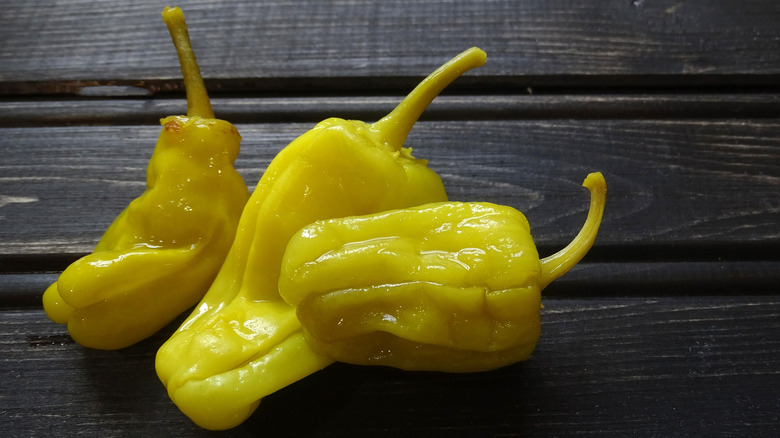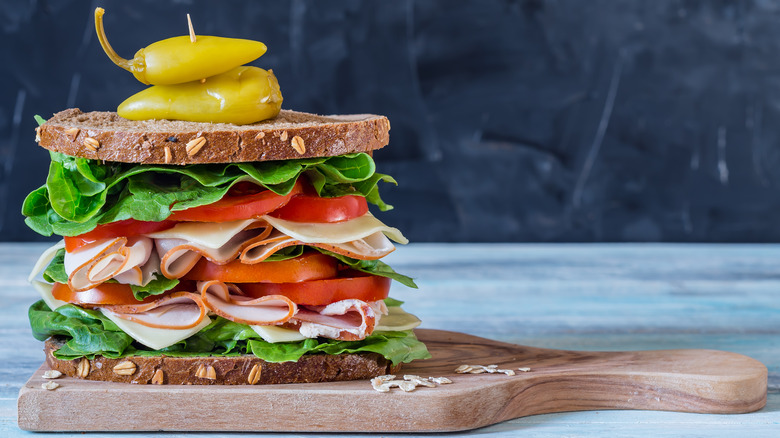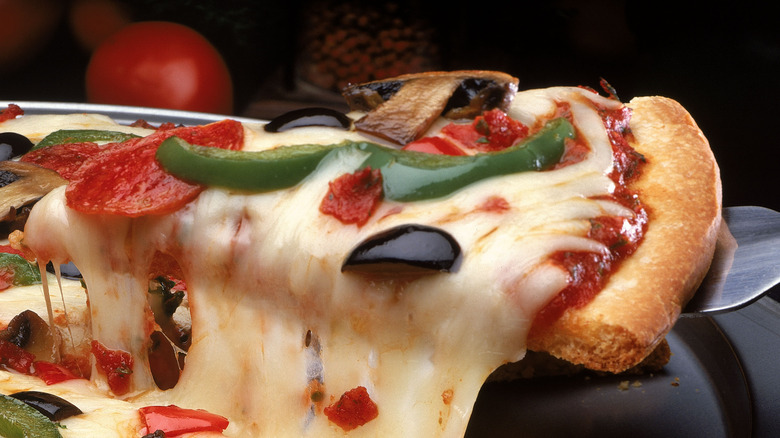Pepperoncini Versus Banana Peppers: What's The Difference?
It comes as no surprise that pepperoncini and banana peppers are often confused with each other. They are really quite similar. You will most often find both of them in a bright yellow color. Neither is exceptionally hot and more often than not, when you see them, they will be sold as pickled peppers on your grocer's shelf (per Tastessence).
Similar, however, doesn't mean identical. While both types of chiles belong to the Capsicum annuum family (via Britannica), they are different in several subtle ways. You just have to know what you are experiencing to be able to tell them apart.
If you are bewildered by how to tell banana peppers and pepperoncini apart, rest easy. By the time you finish reading, you will not only be able to distinguish one from the other but, hopefully, have an entirely new appreciation for what they each bring to the table. Whether you want to spice up a deli-style sandwich, top a pizza, or enjoy a crunchy snack, pepperoncini and banana peppers have a lot to offer.
How alike are pepperoncini and banana peppers?
Pepperoncini and banana peppers share several characteristics. Both, as noted, are generally yellow when we encounter them, and both are a good source of vitamins A and C, as well as a good source of several minerals (via Foods for Better Health).
Beyond this, neither pepper is exceedingly hot. Each has a maximum rating of 500 SHU (Scoville Heat Units) according to Pepper Scale. To put this into perspective, green jalapeños range from 2,500 on the mild side to 8,000 SHU on the hot end. Carolina Reapers can have a rating as high as 2,200,000. 500 SHU is barely noticeable to many pepper lovers.
Of course, both peppers are often pickled. They each have a subtle sweetness that the brining process brings out. Chili Pepper Madness tells us, though, that pickling makes their flavors almost identical, which isn't necessarily the case when eaten raw.
One other similarity between banana peppers and pepperoncini is how people use them. Both are considered classics as sandwich and pizza toppings. They are also often used as a way to spice up soups and salads and add greater depth to many other dishes, such as pot roasts.
Differences between banana peppers and pepperoncini
Now to the fun part: Once you have looked at these peppers a few times, their significant differences become apparent. To begin with, banana peppers are shaped like a banana. They are longer than pepperoncini, and their ends taper to a point. Pepperoncini have rounded ends and appear more stubby in shape (via Chili Pepper Madness).
Their skins are also different. According to Nightshade Family, Pepperoncini tend to be wrinkled, while banana peppers have a slick and smooth exterior. When cut, banana peppers also have a thicker, meatier flesh than pepperoncini. This can come in handy when preparing stuffed peppers.
In terms of taste, there is also a slight but noticeable difference. We read in Chili Pepper Madness that while both peppers may be equally hot, some banana peppers may have no heat. Banana peppers also tend to be slightly sweeter overall, while pepperoncini peppers tend to be a bit tangier.
One final difference is that while banana peppers can often be found fresh at your grocers, pepperoncini can be challenging to locate other than in a jar. This can be a pain if you enjoy fresh peppers in a salad or as a way to spice up cheese and crackers.


